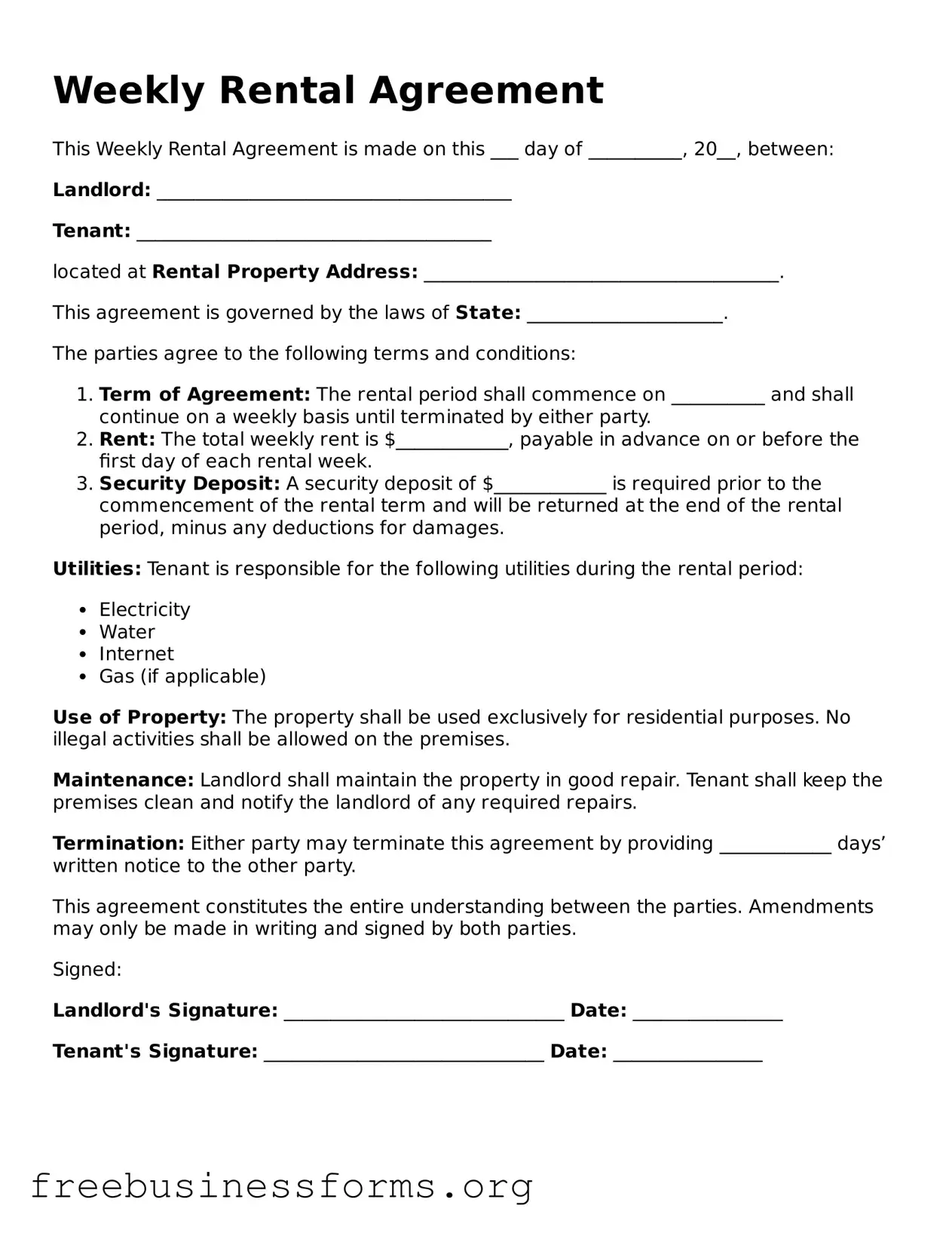Weekly Rental Agreement
This Weekly Rental Agreement is made on this ___ day of __________, 20__, between:
Landlord: ______________________________________
Tenant: ______________________________________
located at Rental Property Address: ______________________________________.
This agreement is governed by the laws of State: _____________________.
The parties agree to the following terms and conditions:
- Term of Agreement: The rental period shall commence on __________ and shall continue on a weekly basis until terminated by either party.
- Rent: The total weekly rent is $____________, payable in advance on or before the first day of each rental week.
- Security Deposit: A security deposit of $____________ is required prior to the commencement of the rental term and will be returned at the end of the rental period, minus any deductions for damages.
Utilities: Tenant is responsible for the following utilities during the rental period:
- Electricity
- Water
- Internet
- Gas (if applicable)
Use of Property: The property shall be used exclusively for residential purposes. No illegal activities shall be allowed on the premises.
Maintenance: Landlord shall maintain the property in good repair. Tenant shall keep the premises clean and notify the landlord of any required repairs.
Termination: Either party may terminate this agreement by providing ____________ days’ written notice to the other party.
This agreement constitutes the entire understanding between the parties. Amendments may only be made in writing and signed by both parties.
Signed:
Landlord's Signature: ______________________________ Date: ________________
Tenant's Signature: ______________________________ Date: ________________
